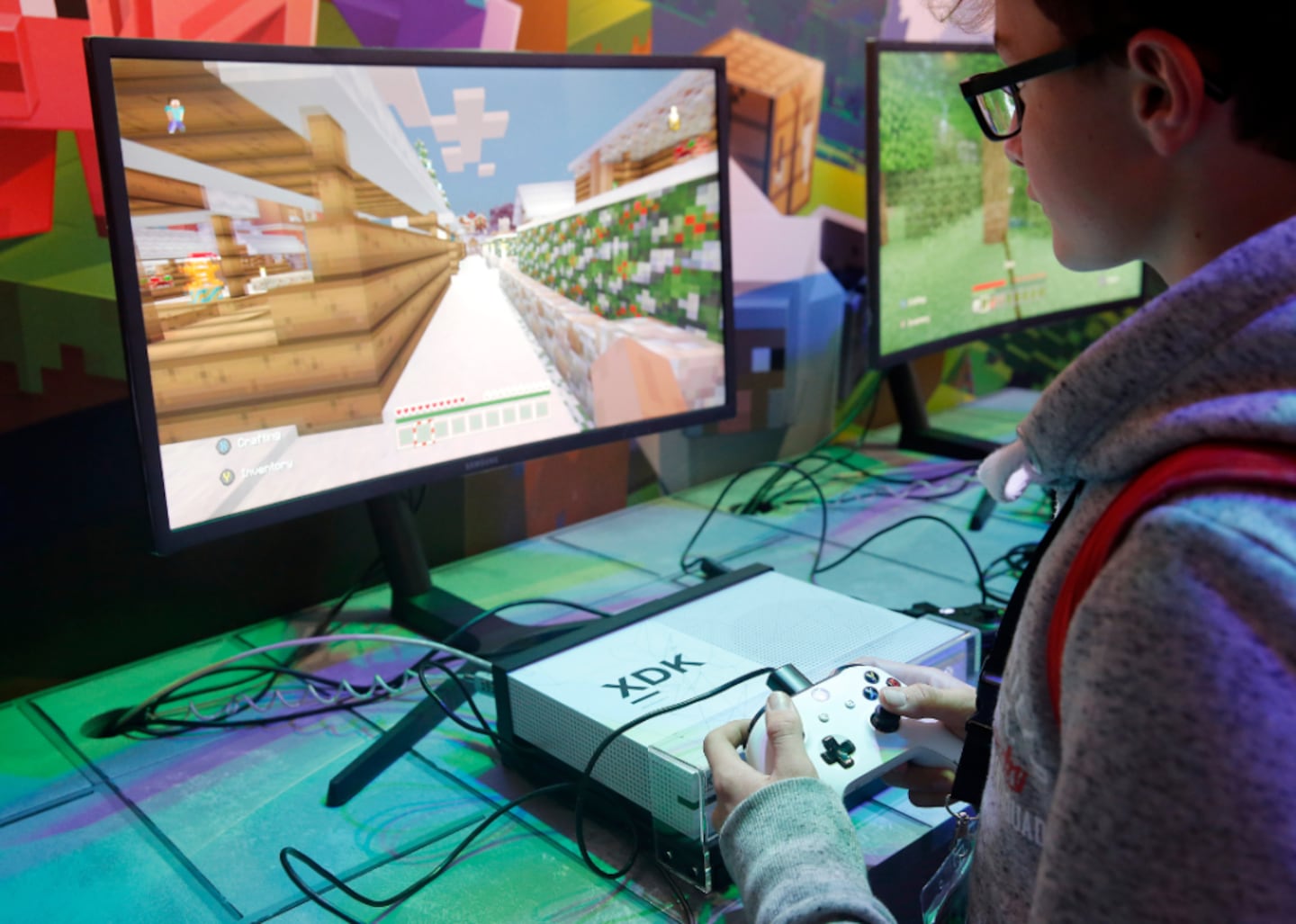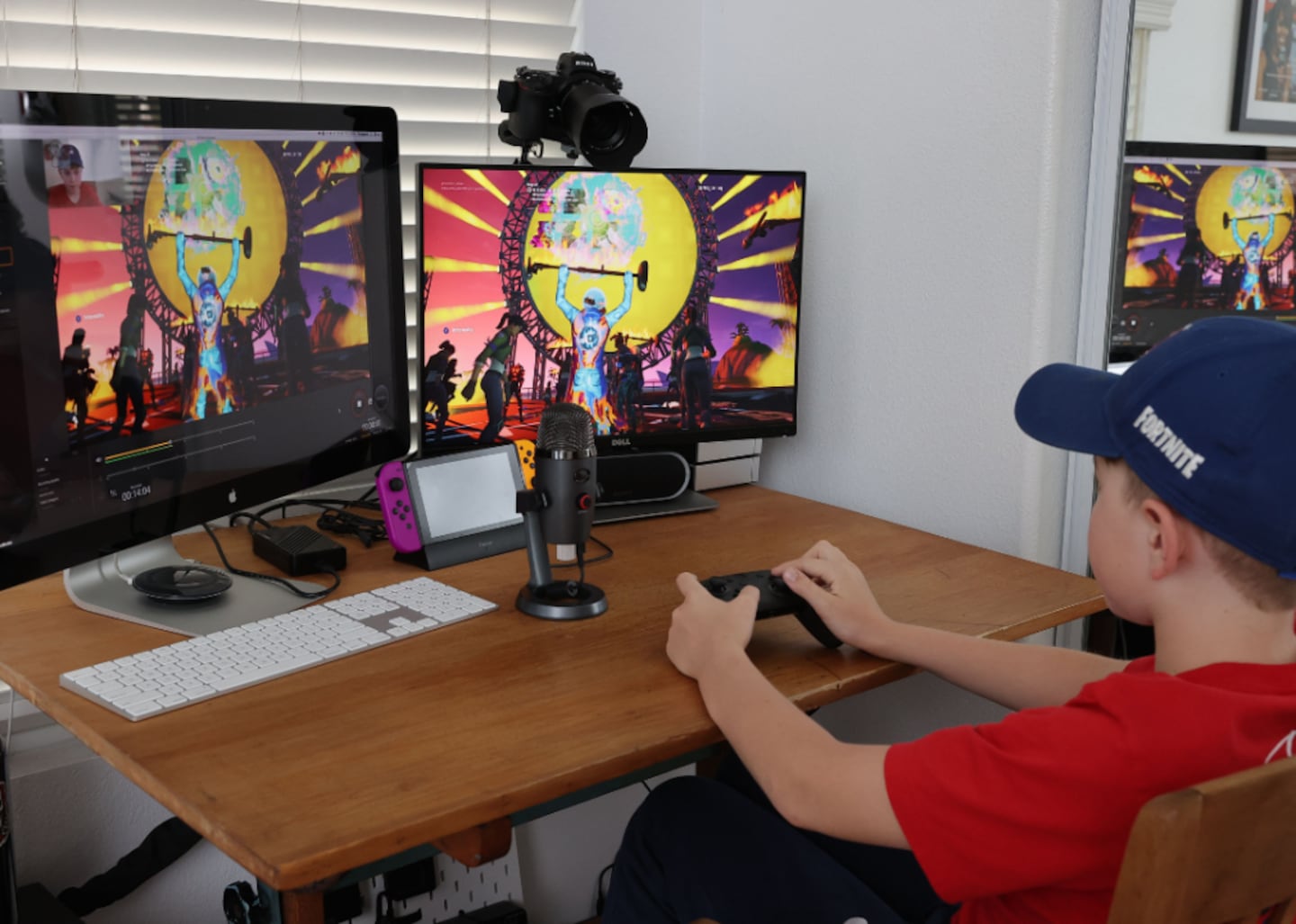Emily Lewis, 15, bonded with her best friend over Royale High, the Roblox dress-up game set in a fantasy high school. What started as a casual interest became a long-term hobby after Lewis grew attached to the game and its community. She recalls the New Year's update she and her friend spent hours playing, even though finding the last bag in a lengthy quest led them on a wild-goose chase.
"You had to find like 50 bags. We both found 49 bags, and since the upgrade had just come out, we could not look up a guide because there was no guide. So we were at it for like hours just talking about our frustrations, and I remember that vividly," she told Stacker.
Lewis is just one of many teens who enjoy socializing through games. According to a study from Deloitte Insights, 7 in 10 Gen Z teen gamers say playing video games helps them stay connected to others. It is also "a way of preening or showing off their skills to their peers," Ash Brandin, a teacher who runs the Instagram account and blog The Gamer Educator, told Stacker.
Like after-school clubs or hangouts at the mall, video games can serve as a means for teens to socialize with friends or make new ones. In the sandbox game Minecraft—one of the bestselling games of all time—players can occupy the same world, working together to build farms, temples, mazes, or anything their minds can conjure. Gamers can also play side games such as capture the flag or hide-and-seek.
Fortnite, which has about 250 million average monthly players as of 2023, is another popular game with teens. One of its game modes allows players to squad up with friends as they battle other teams to be the last ones standing or attend special events like virtual concerts.
Socialization is so important in the game that, in 2021, Epic Games introduced Fortnite Party Worlds, spaces geared toward meeting friends and playing minigames rather than competition.
How did playing games turn into stand-ins for real-life hangouts and socializing with peers? Stacker spoke with experts to investigate why and how teens are using online gaming as a means of connecting with each other.
You may also like: 5 tips for a roaring rooftop party inspired by the Leo season
Chesnot // Getty Images
Nowhere to find friends, except online
Lewis plays Royale High because she enjoys dressing up her character, but it has also become a social space for learning to interact with others. "I know it's different because it's online versus real life, but it helped my talking skills," the teen gamer said.
She added that being on Royale High signaled common interests with other players, lowering the barrier to finding something to bond over. Playing online also helped Lewis transition to a new high school where she didn't know anyone. "I feel like people in high school already have their friend groups and niches," Lewis said. "But in games, you're already in that niche. So it's easier to make friends that way."
Social worker Andrew Fishman tells a similar story in a 2023 Psychology Today article, wherein he describes a client called Lev struggle to connect with others as a shy boy accustomed to online schooling. With no feasible places to find friends around his area, Lev built a social life in World of Warcraft. Arts and sports classes were too costly, nearby libraries catered to adults, and parks near his home were usually empty. "Lev lives in a social desert," wrote Fishman, who points to this lack of places to socialize outside of home or school in many regions as a contributing factor to teens turning to online spaces instead.
Third places, the spaces for socializing outside of home or school and work, are disappearing for teens, Fishman said. "Very few free, easily accessible, attractive places exist for teenagers anymore, so they're turning to digital spaces," he said. Malls, for example, once a popular meet-up destination for teens with nothing in particular to buy or do, have been steadily disappearing from American towns and cities.
A study published on Health Place in 2019, before the COVID-19 pandemic, observed that third spaces like local grocery stores, religious organizations, and bookshops were already on an alarming decline and called for interventions and measures to staunch their loss. While children and adults also enjoy these spaces, teens are hit especially hard. "Teenagers need these spaces to safely explore their identity," Fishman said. "It's a crucial part of growing up."
Retail experts have predicted that by 2032, only about 150 malls will be operational in the United States. The remaining malls have instituted bans and chaperone requirements to discourage groups of teens from gathering. Restaurants, theme parks, and other places increasingly enforce policies aimed at controlling teens without adults from assembling.
Knott's Berry Farm, a California theme park, requires anyone 15 and under to have a chaperone who is at least 21 accompany them after 4 p.m. Shoppers at Westfield Garden State Plaza, New Jersey's second-largest mall, must be 18 years or older to roam unaccompanied on Fridays and Saturdays after 5 p.m. Similar bans have cropped up at Del Amo Fashion Center in Southern California and Pittsburgh's The Mall at Robinson. These restrictions all began in 2023 and 2024.
Neilson Barnard // Getty Images
Setting standards when playing video games
Online gaming, however, is a double-edged solution to socializing. "If you spend a couple of hours a day talking to friends who respect you while playing Call of Duty and you're also doing all of your homework and participating in extracurricular activities, it's probably beneficial," Fishman explained to Stacker. "If they get mad at you when you try to log off, if they're mean to you, or if you feel you have to neglect other parts of your life because of them, it's probably become harmful."
Similarly, experts interviewed by National Geographic acknowledged the benefits of video games. Additionally, Jordan Shapiro, author of "The New Childhood: Raising Kids to Thrive in a Connected World," advised parents to ask about their children's gaming sessions like they would with an after-school club, such as who they were interacting with or what they were doing. This way, parents can monitor their children's behavior without judgment.
For parents, it could also entail a thoughtful conversation about how their interactions online could have consequences beyond those that happen at the moment. "Unfortunately, I do think there may be a disconnect between how 'real' or seriously teens consider their conduct online," Brandin said. "We've all done silly or thoughtless things, particularly as a teen with a developing brain, but when done in person in casual hangouts, there's much less risk that those moments will be recorded or shared for public scrutiny, or even used against us at some point in the future."
That isn't the only way online relationships differ from those in real life, either. Friends online might live far away, log in infrequently, or move on to other games. These scenarios make social connections feel more fleeting. Players might not even see their friends physically as they might if they lived in the same neighborhood. Even Lewis acknowledges that the people she meets online aren't necessarily supposed to be lifelong friends. "Most Roblox friendships don't last that long because people are busy; people forget because you friend a lot of people," she said.
In the end, Lewis made friends at her high school because of her interest in crochet, but still logs into Royale High for fun. At level 2000, she admits, "It seems kind of sad to stop."
Story editing by Carren Jao and Kelly Glass. Copy editing by Paris Close and Tim Bruns. Photo selection by Lacy Kerrick.











